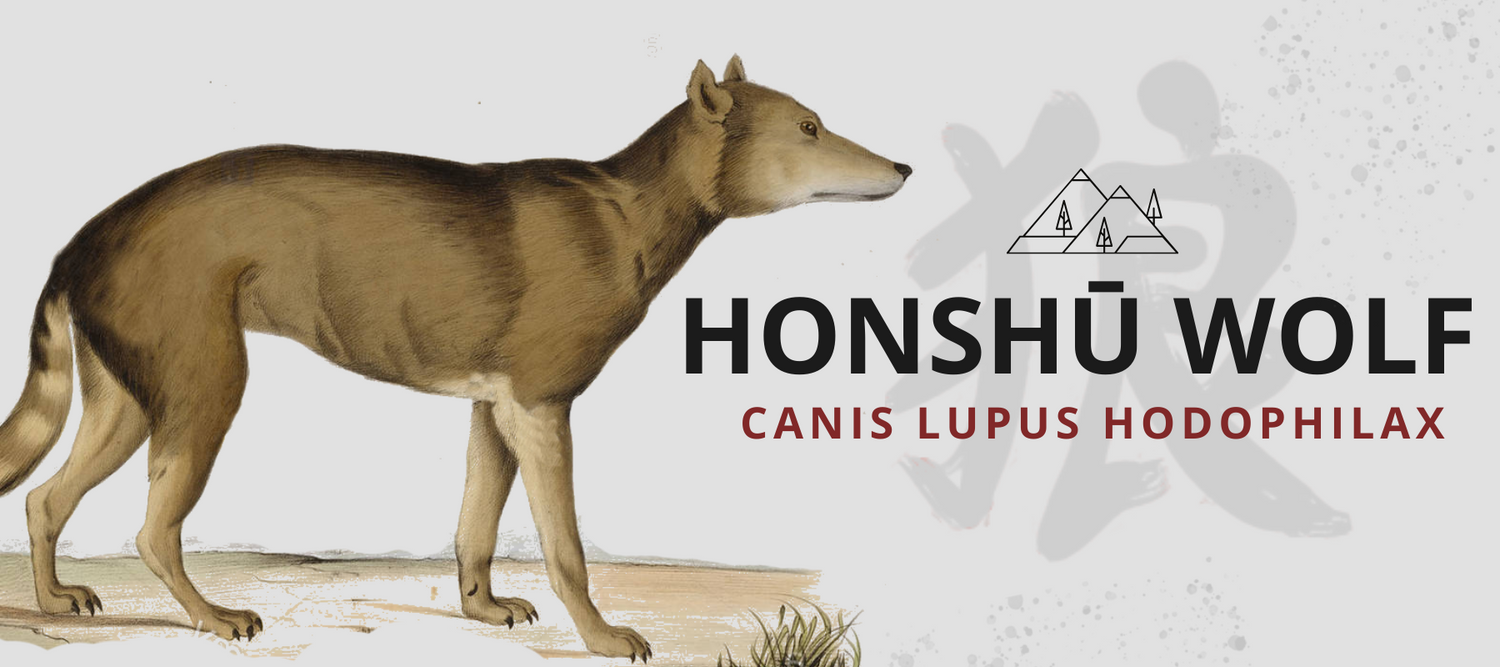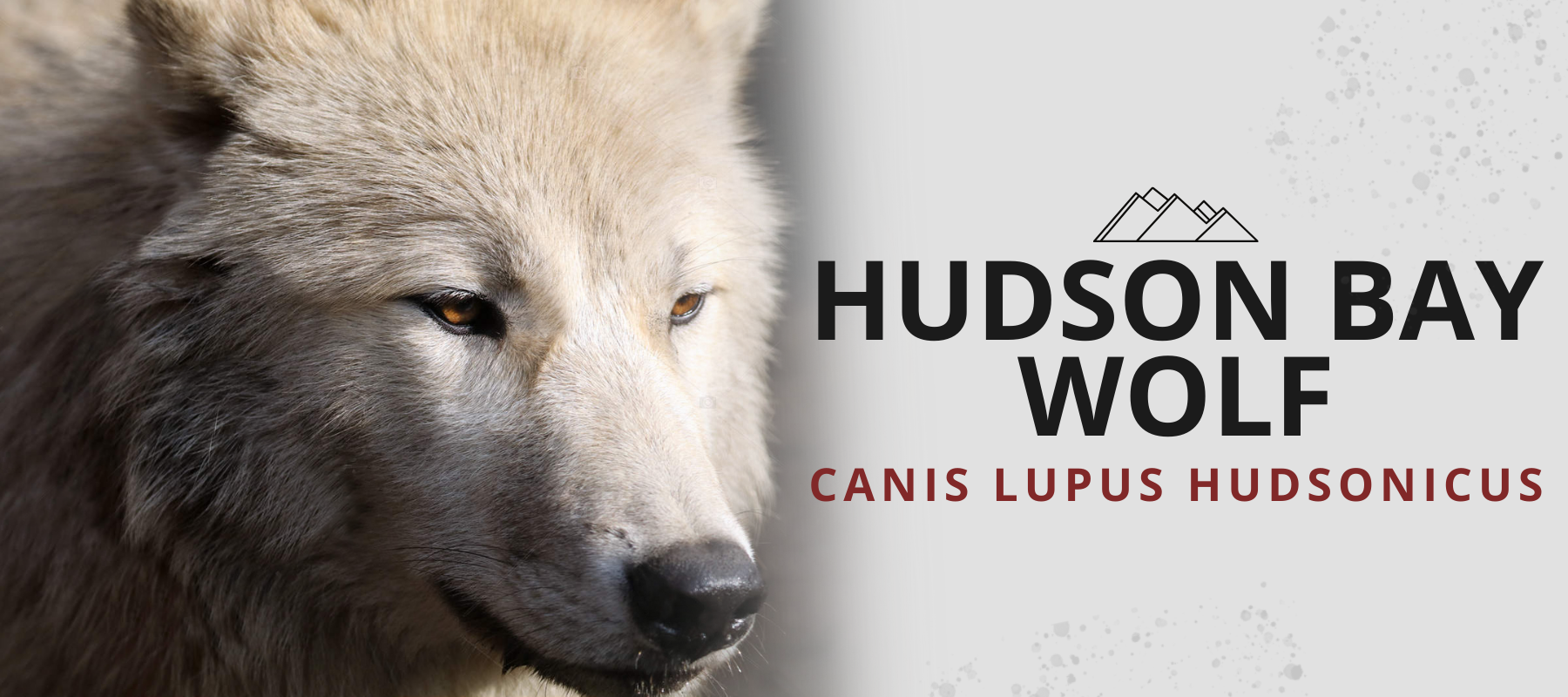
CANIS LUPUS HODOPHILAX
The wolf of Honshū (Canis lupus hodophilax) is one of two subspecies of the gray wolf native to the islands of Japan along with the Hokkaido wolf. It was identified in 1839 as a subspecies of the gray wolf by the Dutch zoologist Coenraad Temminck. This ancestral canine, like its cousin on the island of Hokkaido, has totally disappeared from the wilderness of Japan. It was officially declared on the list of extinct animals in late 1905.
- Common name: Honshu wolf
- Scientific name: Canis lupus hodophilax
- Other names : Okami wolf
- Specie: Grey wolf
- Type: Mammals
- Diet: Carnivore
- Extinct species in 1905
WOLF HONSHU DESCRIPTION
The Honshū wolf was the smallest subspecies of the grey wolf (canis lupus) in the world. It body size was no more than 30 cm at the withers and about 88 cm long from snout to tip of tail. It looked more like a hybridization of wild dog, coyote or jackal than its ancestor the Siberian wolf.His coat was short and dense with a tail as thin as that of a dog. The color of his fur earned him the name of golden wolf. His short and powerful legs allowed him to quickly set off in pursuit of his prey. Its characteristics very close to the gray wolf species have led to its classification in this large family of canis lupus.
However, many scientists and biologists agree that its many physical dissimilarities are sufficient to distinguish it as a new species.
WOLF HONSHU HABITAT
The wolf from Honshū was a very abundant canine animal in Japan until 1732. Like the Hokkaido wolf, which lived only on the island of the same name, the Honshū wolf inhabited on the three Japanese islands of Honshu, Shikoku, Kyushu. He lived mainly in secluded areas of the world, such as mountainous regions.

WOLF HONSHU DIET
The Japanese Honshu wolf was a carnivorous mammal that mainly fed deer, wild boarn, raccoon and other vermin. Farmers appreciated the appetite of its carnivore for smaller animals such as rodents and hares, helping to reduce damage to their crops.The specialized diet of this strictly carnivorous wolf was one of the many reasons it became an extinct species. Wolf population has increased, but its exclusive feeding requirements could not be sustained by local wildlife.

WOLF HONSHU SPECIES EXTINCTION
The Honshū wolf was abundant in Japan until 1732, when wolf with rabies appeared on the island. It quickly went from endangered species to extirpate. Disease, habitat destruction, deforestation and conflicts with humans led to their disappearance. The last specimen of the Honshu wolf species officially became extinct in 1905 after being shot on the island of Honshu in Nara prefecture.Only a few remains of this animal remain today, including five specimens naturalized in national science museum in Japan, the Netherlands and the United Kingdom. The lack of specimens unfortunately does not allow biologists to carry out new studies and to lead DNA analysis.

JAPANESE BELIEFS ABOUT THE HONSHU WOLF
The Honshū wolf was an important figure in Japanese culture like in the Okami folklore. As frightening as it is dangerous, Japanese associate mountains with Honshu wolf species, an ideal hunting ground for this very agile animal.It is believed to be the protector and guardian of the mountain, where he resided in its remotest parts. The mountain wolf is often symbolically linked with the kami mountain in Shinto. The most famous example is the kami wolf from the tomb of Mitsumine in the locality of Chichibu in the northern hemisphere of Saitama Prefecture.
Quotations of the wolf from Honshū are very rare in Japanese literature. It is often described as a spiritual entity protecting travelers. Some legends take the animal to a whole new level, where abandoned children are found and raised by wolves.
Wolves also protect the surrounding villages from dangerous wildlife. Since ancient time, the spirit form of the Japanese wolf is called Makami. It has the capacity to understand human language, rewards good behavior and punishes evil. Makami shrines are located in Tokyo, Saitama and Shizuoka.
Some villages also worshipped the wolf and called it Shishiyoke. He protected their village and crops from wild boars. In addition, other protective shrines can be found in many villages, especially on the Kii Peninsula.
Ancient Japanese traditions recognize healing properties in the skulls of the wolf, which was used to protect the villagers and perform rituals to purify the souls of the possessed residents.This is particularly the case of some villages in Gifu Prefecture. In addition to hunting rodents that roamed the farmers' fields, the wolf could sometimes leave prey for the villagers.
An ancient tradition, called Inu, consists of feeding rice to a she-wolf about to give birth to wolf pups. In return, the wolf protects the village.
Some legends describe the Honshū wolf as a prophetic creature, able to read the future. In the Tamaki Mountains, legend said that the wolves howled during a flood in 1889 to warn the villagers of the danger. Thanks to the wolves, they narrowly escaped the disaster.
If you love Japanese culture and wolf, we recommend you to discover our amazing Okami wolf t-shirt. For more information on the other magnificent species of wolves that have walked our lands, we recommend you to read our blog post on the amazing Hudson bay wolf species.




